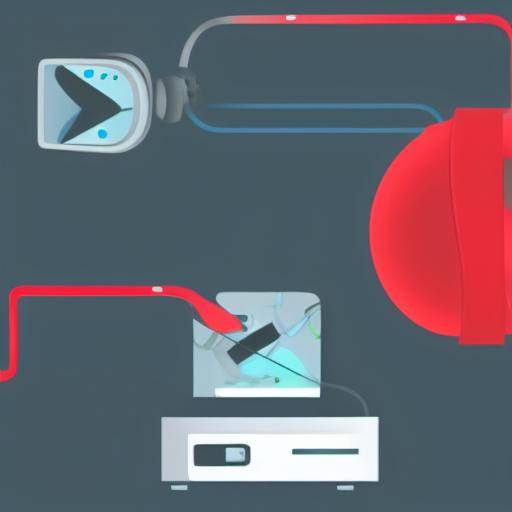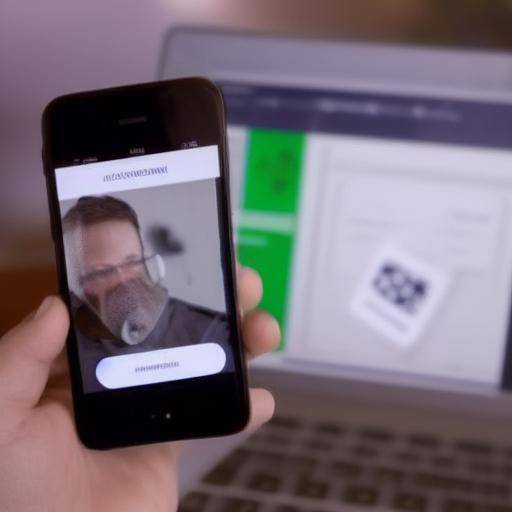
Networking is a fundamental part of the professional world, and building solid relationships is crucial for success in any field. Active listening is a powerful ability that can significantly strengthen professional connections. In this article, we will explore in detail how we can use active listening to build solid relationships in networking. From history and background to practical advice, study cases and future predictions, this article will provide an integral and valuable insight for anyone interested in improving their networking skills through active listening.
Introduction
In the current business environment, networking has become significant. The ability to establish and maintain strong relationships can make the difference in terms of professional opportunities and career development. However, simply participating in networking events is not enough; the quality of interactions is fundamental. This is where active listening becomes relevant. By mastering this ability, one can really connect with others, understand their needs and foster genuine and meaningful relationships.
In this article, it will be addressed in depth how active listening practice can improve and enhance our networking skills. From its origin and evolution to practical advice and future predictions, this content will provide a complete and practical understanding of the relationship between active listening, networking and building lasting professional relationships.
History and Background
Active listening is a skill that has been recognized and valued throughout history in various cultures and contexts. From ancient philosophy to modern leadership practices, the importance of listening with attention has been a constant. In the 1950s, Carl Rogers coined the term "active listen" to describe a form of communication focused on the interlocutor, in which the listener demonstrates understanding and empathy. This notion laid the foundation for the further development of active listening as a fundamental tool in the professional and personal sphere.
Over the years, active listening has evolved with the advent of new technologies and changes in social dynamics. It is now widely recognized as an essential skill for the establishment of effective relationships, especially in the context of networking and the business environment.
Analysis in Deep
Benefits of Active Listening on the Networking
Active listening offers a number of significant benefits in the field of networking. Beyond simply listening to the words of others, it implies understanding the underlying emotions, intentions and needs of communication. By applying active listening in networking environments, opportunities for strategic collaborations, understanding the needs of others and forging genuine and meaningful relationships can be identified.
Challenges and Challenges
While active listening can be a powerful tool, it also presents challenges. In networking environments, the need for short and effective conversations can often hinder active listening practice. It is essential to find a balance between listening carefully and actively participating in professional interactions.
Current trends
In the digital era, networking dynamics have experienced significant transformation. Online platforms, social networks and virtual spaces have expanded networking opportunities, but have also raised unique challenges in terms of how to effectively apply active listening in virtual environments.
Comprehensive review
Practical Applications
To effectively apply active listening to networking, it is essential to adopt an open and responsive mindset. Actively listening to the needs, concerns and objectives of the people we interact with can open doors to opportunities for collaboration, mentoring and building solid networks.
Best Practices
Some key tips for improving the application of active listening in networking include pre-disaster preparation, open question formulation that fosters communication and the establishment of authentic connections based on mutual understanding.
Comparative analysis
By comparing active listening to other more conventional networking practices, it is clear that active listening offers a unique advantage by allowing a deeper understanding of the needs and motivations of others. Unlike simply exchanging presentation cards, active listening lays the foundation for strong and lasting relationships.
Practical Tips and Accessible Tips
Future steps
Some practical steps to integrate active listening into the networking context include establishing visual contact during conversations, demonstrating genuine interest in topics addressed by other professionals and practicing synthesis and reformulation to demonstrate understanding.
Effective strategies
The integration of active listening into networking strategies can significantly enrich professional interactions. By focusing on understanding before being understood, one can build stronger relationships, identify opportunities for collaboration and demonstrate leadership focused on the needs of others.
Industry Perspectives and Expert Reviews
Implications for the Future
Experts in the field of networking and professional relationships highlight active listening as a fundamental skill for success in an increasingly interconnected business environment. The ability to truly understand others and forge connections based on that understanding is seen as a strategic advantage in the current working world.
Trends and Prognostics
Current trends indicate growing recognition of the importance of emotional intelligence in the business environment. In this context, active listening is positioned as a key competition for those seeking to stand out in the field of networking and professional relationships.
Case Studies and Practical Applications
Successful experiences
The effective use of active listening in the context of networking is illustrated through various case studies, which show how this ability has contributed to the establishment of strategic alliances, business opportunities and mutually beneficial relationships.
Lessons Learned
In analyzing these cases, valuable lessons can be drawn on how active listening can be integrated in a practical and effective manner in various professional environments, regardless of industry or industry.
Future Trends and Predictions
Evolution and Development
As the business environment continues to evolve, active listening is expected to play an increasingly relevant role in the formation of effective professional relationships. Companies and professionals that prioritize the development of this skill will have a significant competitive advantage in the future.
Challenges and Opportunities
While active listening offers numerous opportunities to improve networking and professional relationships, it also poses challenges in terms of its effective integration into increasingly complex and diversified environments.
Conclusion
In short, active listening is a powerful tool that can significantly transform the way we build relationships in networking. In understanding the needs, concerns and aspirations of our colleagues and professional contacts, we can establish genuine connections that last in time. By integrating active listening into our networking strategies, we can strengthen our professional relationships and maximize the opportunities presented to us.
Frequently asked questions (FAQs)
Question 1: What is the difference between listening and actively listening in the context of networking?
In the context of networking, listening involves simply paying attention to the words of others, while actively listening involves a deeper understanding, including the interpretation of emotions, motivations and underlying needs behind communication. It is about understanding instead of simply listening, which allows us to establish more authentic and meaningful connections.
Question 2: How can I improve my active listening ability to enhance my networking interactions?
One way to improve active listening skills is to practice empathy and genuine interest in the experiences and perspectives of others. In addition, the use of open questions and demonstrating a real commitment to understanding others can significantly elevate our interactions in networking environments.
Question 3: Is active listening equally relevant in virtual networking environments?
Undoubtedly, active listening is equally relevant in virtual networking settings. Despite the differences in the dynamics of online communication, the ability to genuinely understand others and establish meaningful connections remains critical for successful networking in the digital domain.
Question 4: How can I demonstrate that I am practicing active listening during networking interactions?
Some ways of demonstrating active listening practice include maintaining visual contact, demonstrating understanding through affirmative head movements and gestures, and reformulating what has been expressed to confirm mutual understanding.
Question 5: What is the impact of active listening on building long-term professional relationships?
Active listening facilitates the construction of long-term professional relationships by establishing a solid basis for mutual understanding and trust. This in turn fosters collaboration, exchange of ideas and mutual support over time.
Question 6: How can I apply active listening to identify collaboration opportunities in networking environments?
By practicing active listening, one can identify common needs, problems or aspirations with other professionals, which in turn can lead to opportunities for strategic and mutually beneficial collaboration in the field of networking.
Conclusion
In conclusion, active listening is a powerful ability that can transform our interactions into networking, allowing us to truly understand others, establish genuine connections and build strong and lasting professional relationships. By applying active listening in a conscious and strategic way, we can significantly enhance our networking and improve our professional opportunities.


















































